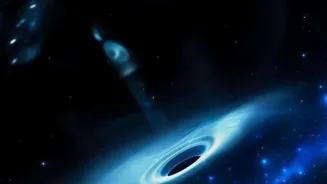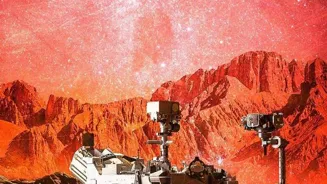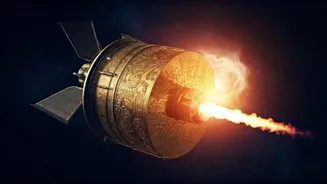Unveiling the Secrets of Supermassive Black Holes. Explore the cosmic interplay shaping galaxies. Read More!
For decades, astronomers have gazed at the cosmos, meticulously mapping galaxies of every shape
and size. But hidden at the heart of nearly every one of these galactic behemoths lies a mystery of cosmic proportions: the supermassive black hole (SMBH).

Weighing millions, even billions, of times the mass of our Sun, these gravitational monsters were long considered mere residents of galaxies, passively observing the drama unfolding around them.
However, mounting evidence suggests that SMBHs play a much more active, even crucial, role in shaping the very galaxies they inhabit.
This revelation is changing our understanding of how galaxies form and evolve, challenging established theories and creating new avenues of research for Indian and international scientists alike.
The connection between the small and big is one that keeps scientists busy with constant new discoveries.
New models show SMBHs affect galaxies through feedback, regulating star formation like a thermostat
New theoretical models and detailed observations are highlighting a complex interplay between SMBHs and their host galaxies. One of the key mechanisms at play is what scientists call "feedback." As matter spirals toward a SMBH, it forms a superheated disk known as an accretion disk.
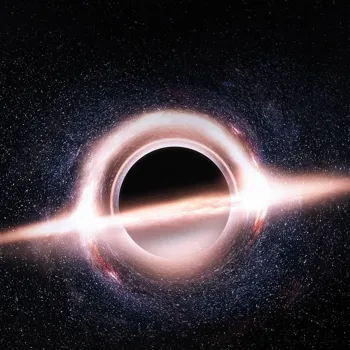
This disk emits enormous amounts of energy in the form of radiation and powerful jets of particles that can travel vast distances into space. This energy, propelled from the SMBH, can significantly impact the surrounding gas and dust, regulating star formation within the galaxy.
Imagine it like this; if a galaxy were a kitchen, the black hole at the center can act like a thermostat that controls the temperature of your kitchen. This is how it can influence the number of stars that are being made.
Observing early galaxy evolution: SMBH activity affects star formation, shaping galaxies. Indian observatories contribute
Observations of galaxies, especially during their early stages of evolution, reveal that the activity of the central SMBH often coincides with periods of intense bursts of star formation.
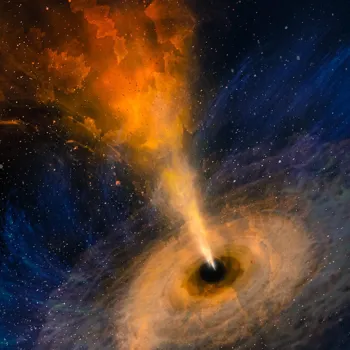
The outflow of energy from the black hole can compress nearby gas clouds, triggering them to collapse and form new stars. However, the same energy can also heat the gas and prevent it from cooling and collapsing, effectively shutting down star formation in some regions.
This delicate balance between promoting and suppressing star formation, governed by the SMBH's activity, is believed to be a critical factor in determining the final size and shape of the galaxy.
Indian astrophysical observatories, with their increasing capabilities, are contributing valuable data to these global efforts, studying galaxies across different epochs to understand this co-evolution.
India is investing to get more and better telescopes to better understand the mysteries of space.
Galaxy's influence on SMBH growth in interdependent relationship
The relationship between SMBHs and galaxy formation isn't a one-way street. The galaxy itself influences the growth of its central black hole. As gas and dust accumulate in the galaxy's core, they can eventually fall into the SMBH, providing the fuel it needs to grow.
This process is particularly important in the early universe, when galaxies were smaller and gas-rich. Mergers between galaxies also play a significant role, as they can funnel large amounts of gas towards the central black holes, causing them to flare up in activity.
This interplay between the black hole and the host galaxy makes us think that they control each other.
SMBH mass linked to galaxy properties, co-evolve through feedback loop
The current understanding suggests that the mass of the SMBH is directly related to the properties of its host galaxy, such as the size of its central bulge or the speed at which stars orbit within it.
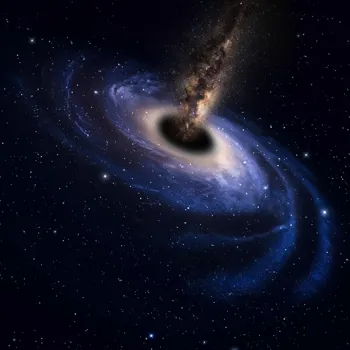
This relationship implies that SMBHs and galaxies co-evolve, influencing each other's growth over cosmic time. One leading explanation for this connection is that the energy output from the SMBH acts as a self-regulating mechanism.
When the SMBH grows too large, its powerful outflows can shut down star formation, limiting the galaxy's growth and, in turn, limiting the amount of fuel available to the black hole.
This feedback loop helps to maintain a balance between the SMBH and its host galaxy, giving the relationship an amazing control.
Studying SMBHs' impact on galaxies through global collaboration
Studying the connection between SMBHs and galaxies is a complex and ongoing endeavor, which requires the collaboration of researchers from around the world.
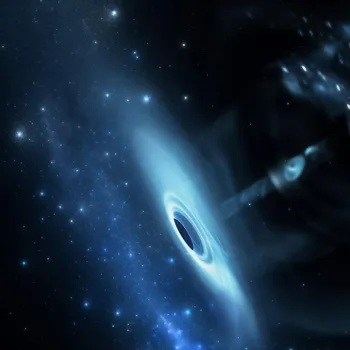
Indian astronomers are actively involved in this effort, using state-of-the-art telescopes and computational resources to simulate galaxy formation and analyze observational data. One of the key challenges is to understand the details of the feedback processes that regulate star formation.
How does the energy from the SMBH couple to the surrounding gas? How does this energy affect the different types of galaxies in various environments?
Answering these questions will require a combination of theoretical modeling, high-resolution simulations, and detailed observations across the electromagnetic spectrum. This way, these questions can be tackled with international collaboartion.
Future astronomical facilities will revolutionize study of SMBHs and galaxies, advancing science
Future astronomical facilities, such as the Extremely Large Telescope (ELT) and the Square Kilometre Array (SKA), will provide unprecedented opportunities to study SMBHs and their host galaxies in greater detail.
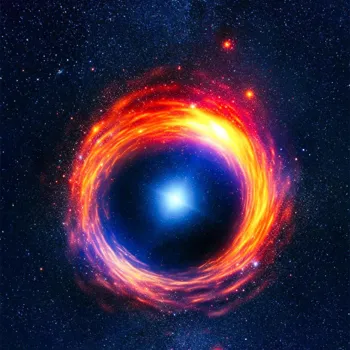
These instruments will allow us to probe the environments around SMBHs, map the distribution of gas and dust, and measure the velocities of stars and gas with unprecedented accuracy.
These observations will provide critical tests of our theoretical models and help us to understand the role of SMBHs in galaxy formation. With these advanced astronomical facilities, we can expect to make significant progress in unraveling the mysteries of the universe and our own existence.
This would be one of the milestones in science and astronomy.
